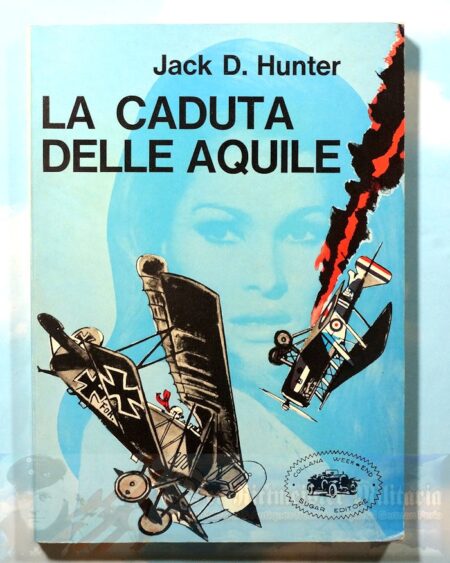Description
JACK D. HUNTER – ORIGINAL PAINTING – STACHEL TAKES A PRISONER
Jack Hunter was an old, dear friend. His hit German WW I aviation novel inspired my lifelong interest in WW I in general, and WW I aviation in particular. I met Jack through his lovely wife, Tommy. She had a small antique shop in St. Augustine, FL. My wife, Melissa, and I were walking by the shop where I first noticed an easel with a lovely painting of a WW I German Navy airplane shooting down a British airplane. I then looked up to discover that the shop’s name was “The Blue Max.” I walked in and learned that the painting was for sale, along with another portraying a similar theme. Melissa bought both for me on the spot as it was close to my birthday. I then asked the shop owner (whose name was Tommy, i.e. Shirley Thompson Hunter) about the shop’s name. She replied “My husband wrote the book!”
I was stunned and told her how his novel had inspired me. She said that I ought to call him as he was always happy to chat with fans. From that point onward until his death in 2009, Jack and I had a very special relationship, one that I truly miss. In addition to his talents as an author, he was also a fine painter. In fact, he painted the dust jacket for The Blue Max’s first 500 editions, since his publisher would not sanction a color dust jacket for a first-time author. [Jack was an executive for Delaware’s Du Pont at the time]. As our friendship blossomed I bought several of Jack’s originals, and eventually offered them on my website.
One day I decided to commission a painting from Jack. He asked what I wanted, and I replied that I wanted him to surprise me. My only request was that he depict the scene from the book he considered to be the most powerful. Several months later, he finally called and said I should come get my painting.
As I drove to St. Augustine, I wondered what he had cooked up. I was thinking it might be the scene where Stachel saved von Richthofen. To my surprise, it was not. Instead, he had painted the scene where Stachel flies an out-of-date Pfalz, then captures and later shoots down, a British observation airplane. The book’s depiction of this scene differs greatly from the one shown in the movie. The book describes Stachel’s absolute ruthlessness after he directs the British airplane to his airfield, then shoots it down in front of his squadron-mates. This is quite a bit different from the movie where the wounded gunner goes for his gun, causing Stachel to perceive a threat that he is forced to eliminate.
Jack titled the painting “Stachel Takes a Prisoner.” It shows Stachel directing the British observation airplane back to his base. In it, the observer is clearly incapacitated, being either wounded or dead. [Later Jack illustrated a special edition of The Blue Max with six charcoal action sketches, including a slightly different depiction of the same scene].
This water color painting measures 19 1/2” x 15.” It is housed in a custom handsome, brown, wood frame that measures 25” x 20.” The painting is tastefully double matted within it. A classy metal plaque displays the painting’s title, along with the painter’s name. This is a one-of-a-kind painting that has great sentimental value to me.






